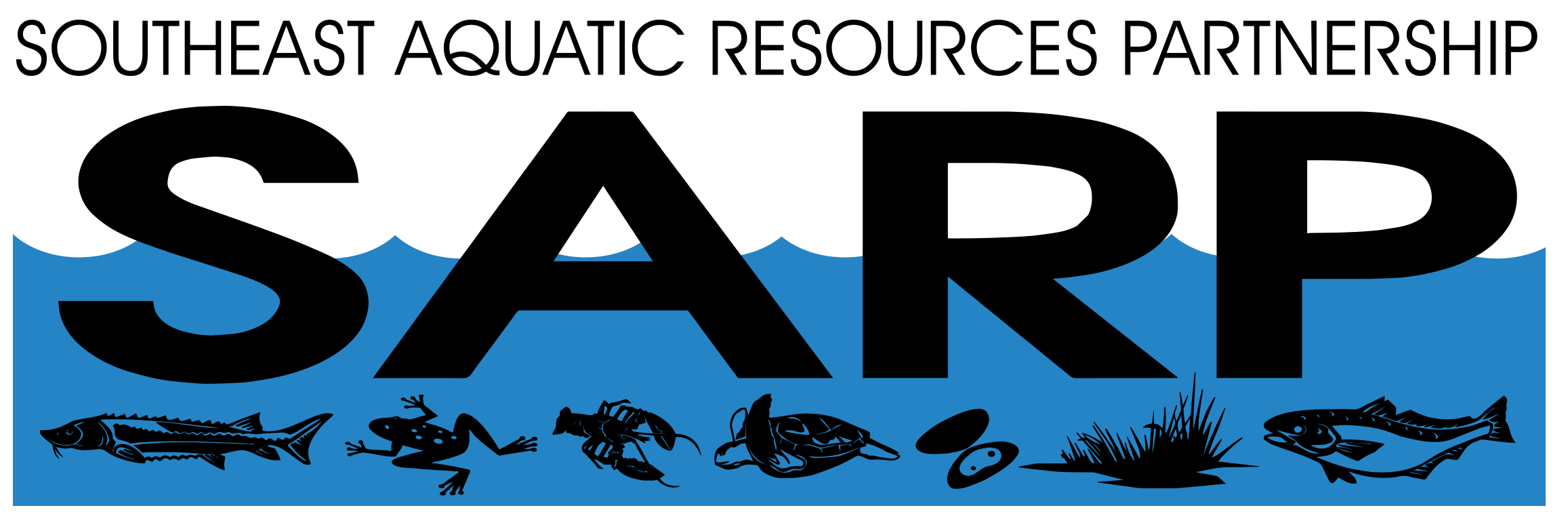
Southeast Aquatic Resources Partnership (SARP) was initiated in 2001 to address the myriad issues related to the management of aquatic resources in the southeastern United States, which includes about 26,000 miles of species-rich aquatic shoreline and over 70 major river basins. The area faces significant threats to its aquatic resources, as illustrated by the fact that 34% of North American fish species and 90% of the native mussel species designated as endangered, threatened, or of special concern are found in the Southeast. SARP was recognized as a partner of NFHP in October 2007.
https://southeastaquatics.net/
jessica@southeastaquatics.net
|

This folder contains data contributed to the National Fish Habitat Partnership (NFHP) Data System by the Southeast Aquatic Resources Partnership (SARP). SARP was recognized as a partner of NFHP in October 2007.
|

This geodatabase contains the official boundary of the Southeast Aquatic Resource Partnership with State Boundaries. The boundary was originally developed by the United States Fish and Wildlife Service and was updated in 2020 to reflect revisions from the Southeast Aquatic Resource Partnership, a recognized Fish Habitat Partnership (FHP) of the National Fish Habitat Partnership.
Categories: Data;
Types: ArcGIS REST Map Service,
ArcGIS Service Definition,
Downloadable,
Map Service;
Tags: Alabama,
Analytical boundary,
Aquatic habitats,
Boundaries,
Boundary, All tags...
FHP Boundary,
FHP Product,
Fish habitats,
Florida,
Georgia,
Kansas,
Kentucky,
Louisiana,
Mississippi,
Missouri,
Puerto Rico,
SARP,
South Carolina,
Spatial Data,
Tennessee,
Texas,
Virginia,
Visual, Fewer tags
|

Partnership - Southeast Aquatic Resources Partnership The Harpeth River drains nearly 900 square miles in middle Tennessee and flows through one of the fastest growing regions in the country. It is a state designated Scenic River in Davidson County, within 30 minutes of downtown Nashville. The river is one of the most archeologically and historically significant rivers in the state. However, the project area was listed on the U.S. EPA Section 303(d) list for siltation and habitat alteration, nutrient enrichment and low dissolved oxygen. Low dissolved oxygen was particularly an issue above a 6.2 foot low head dam near Franklin, Tennessee. Dissolved oxygen measurements at this dam were below state standards, and...
|
Partnership – Southeast Aquatic Resources Partnership The Nueces River basin has some of the most pristine streams, creeks, and rivers in Texas. The Nueces River basin supplies approximately two-thirds of the recharge to the Edwards Aquifer, which serves as a drinking water supply for millions of Texans. Since 2007, a riparian invasive plant, Arundo donax (giant reed), has been spreading at a rapid rate. Giant reed forms dense colonies that can grow to more than 20 feet in height and channelize streams, significantly altering instream habitat conditions for native aquatic species. In the early spring of 2010, landowners along the Nueces River began to notice the explosive expansion of Giant reed and large...
|

Partnership – Southeast Aquatic Resources Partnership The Guadalupe Bass ( Micropterus treculii) is the Texas state fish, endemic to central Texas, and an economically important stream sport fish. It is also listed as threatened due to habitat degradation, stream flow alteration, and hybridization with non-native Smallmouth Bass stocked in the 1970’s and 80’s. The headwaters of the Blanco River bubble up from springs near the city of Blanco in the Texas Hill Country. Historically this river was home to a good population of Guadalupe Bass, but recent surveys found only Guadalupe/Smallmouth Bass hybrids. It was thought efforts to remove Smallmouth Bass were impractical. However, in 2011 during the height...
|
View more...
|
